Truck Camper Magazine tackles Supertramp’s audacious truck camper versus Mercedes Sprinter van video. What can you tow with a truck camper rig? Put down that coffee folks. This one is epic!
One of the great pleasures of running Truck Camper Magazine is the opportunity to surprise tens of thousands of truck camper enthusiasts and industry leaders with magazine and social media posts. Most of the time, nobody outside of Angela, Gordon, and Cosmo has any idea what we’re about to run.
That near daily burst of positive (or at least constructive) energy is something we greatly enjoy creating and sharing. Saving the world? Nope. But we can at least give you a fun bit of truck camper information and entertainment.
Supertramp Flagship HT Versus Van: Go!
Every once in a while, that script is flipped and someone posts content that has us thinking differently, learning something new, and generally enjoying the heck out of a truck camper article, post, or video. We get to be the surprised audience!
Above: Oh no they didn’t! Supertramp tows a Sprinter van behind a truck camper rig.
That’s exactly what happened with Supertramp’s excellent recent video putting their Supertramp Flagship HT hard side truck camper against a Mercedes Sprinter Van.
I nearly lost my mind when Matt casually towed the Sprinter van across a gorgeous Colorado landscape. He could have dropped the proverbial turnbuckle right there. Oh snap. It’s on! Damn. Funny!
Above: Click to watch Supertramp’s van vs. camper video
Truck Camper Magazine’s Response
First of all, Matt and the Supertramp team did an amazing job with this video—topic, scripting, production and editing. They absolutely nailed it. After I watched the video, I started writing a few perspectives to burnish the subject Matt and the Supertramp crew towed and tackled. Here goes…
Van upfitters can’t escape the width, length, and height of the van body form factor. Some vans don’t even have the height to fully stand. Unless you go full cab and chassis, this is a major Achilles’ heel of vans.
Got kids? Got dogs? Want to stretch inside in the morning? Take note. Then bring your significant other, kids, dogs, and pet parrot to the van dealership, close the van door, and hang out for a bit. Next, stand and stretch without hitting the ceiling, wall, or poking Polly in the tail feathers.
Van upfitters are also stuck with the stamped metal body that—as Matt brilliantly pointed out—is an excellent conductor of heat and cold. To make matters more challenging, there are relatively limited opportunities for insulation.
Keeping the plumbing insulated against winter freezing is another van conundrum. The upfitters have been very clever in adapting to this reality, but there’s only so much they can do. If winter camping is your jam, this issue could be critical.
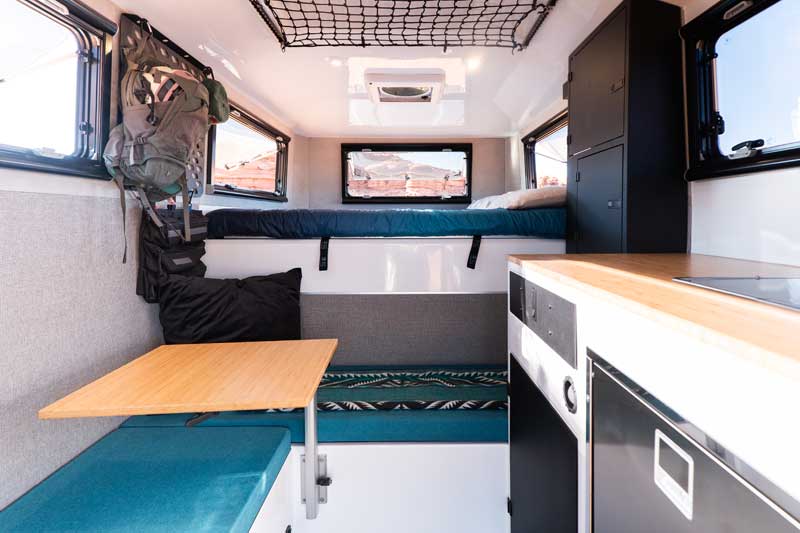
Above: Inside the hard side Supertramp Flagship HT
As Matt states, you can fully stand and stretch in a Supertramp (or nearly any truck camper, for that matter). There’s also more seating and lounging opportunities, more windows to enjoy where you are, more storage, and a more open and airy interior vibe on tap.
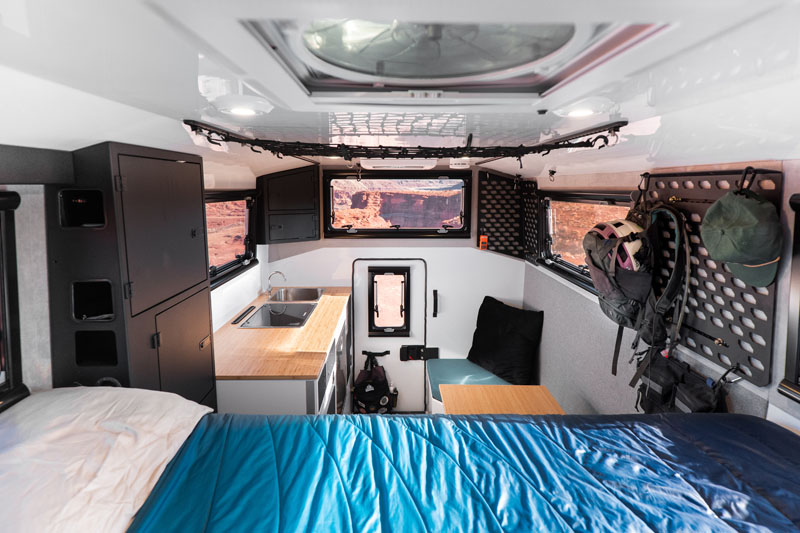
Above: The view from the Supertramp Flagship HT cabover towards the entry door
The caveat? You might personally prefer a van interior. It’s highly subjective, so be sure to try them both in person. Just remember the pros and cons while you consider your choices. Think hot, cold, stand, and stretch. And I’m starting to sound like Jane Fonda.
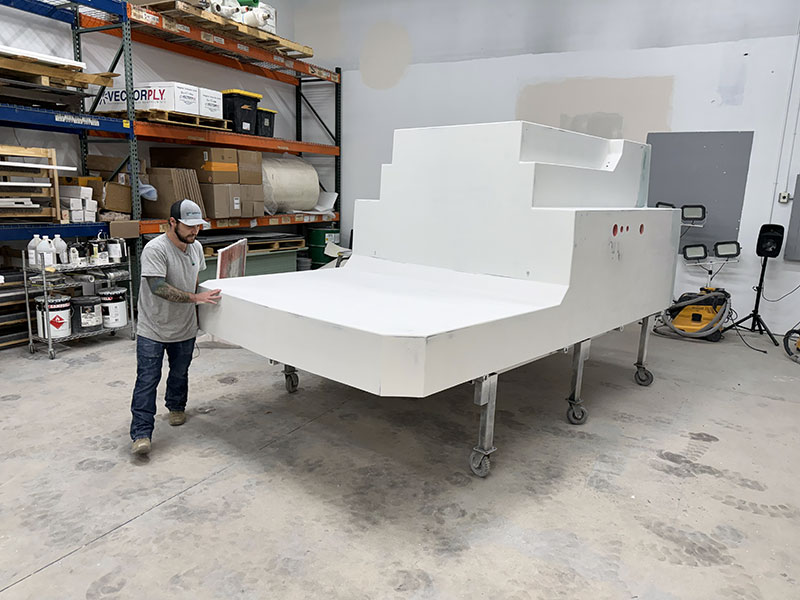
Above: The one-piece vacuum-infused fiberglass under body shell of a Supertramp Flagship LT
As for Supertramp’s camper construction, it’s one of the best we’ve ever seen. The company’s highly-innovative, highly-developed and proprietary approach to vacuum-infused fiberglass results in an aerospace-level strength to weight ratio. It’s all one-piece sections pulled from molds. Best of all, the fiberglass walls are 1.5 inches thick and seriously insulated. If it’s construction quality, insulation, or peak summer heat and/or winter camping that matters, it’s game over for the Sprinter van. Supertramp for the win.
Matt made this point, but we have to take this further. Much further.
We have talked to many motorhome owners over the years who have lost their minds to the cacophony of clinks, clanks, dings, and bangs as they shake, rattle, and bounce down the road. This is the discordant symphony of dishes, silverware, tea kettles, and canned goods vibrating in a not-so-glorious racket.
Then you hit a pot-hole, somehow sending your sole saucepan lid out from its drawer, onto the floor, and spinning round and round on the floor. You couldn’t replicate this occurrence if you were on MythBusters, but that miraculously ejected saucepan just spins, and spins, and spins…
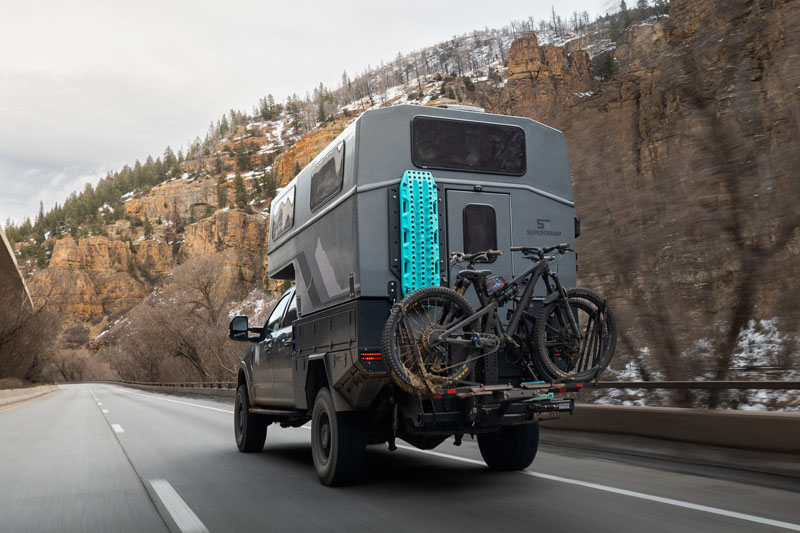
Above: A demountable Supertramp Flagship HT and pickup truck with a Bowen Customs bed
Matt correctly states that having complete separation between the truck and camper helps to eliminate this mind-bending experience. He doesn’t say that most van and motorhome owners learn to strategically pad their wares, muffling the noise.
To be honest, truck campers don’t completely avoid this issue. Yes, we don’t really hear our stuff rattling around in our campers, but it most definitely does. If we’re on a particularly rough road, we’ll sometimes hear the dreaded thump or crash of an item falling inside our camper. If you don’t hear that thump or crash now or then, you’re either not truck camping, or a single Metallica fan. It happens.
It’s truly shocking what Class B Sprinter vans cost from the major builders, including Winnebago, Airstream, Thor, Coachmen, and Pleasure-Way. Purchased new, these vans often start in the $180K range and quickly go to $250K and higher! What’s nuts is how popular these units are at these stratospheric prices.
That stated, trucks and campers aren’t exactly cheap these days. An entry-level one-ton single-rear-wheel or dually gas work truck starts in the $45K to $50K range. Add a few options, including four-wheel drive and some options and you’re in the $55K to $65K range. Go diesel and add $10K. Go with a high-end luxury trim and you’re pushing $100K.
On balance, our personal truck—a Ram 3500 6.4L HEMI (gas), crew cab, long bed, dually, 4×4 —starts around $50K (in late 2025) for a Tradesman work truck and upwards of $70K for a Laramie luxury trim. We’ve been cross-country several times now with our Ram 3500 6.4L HEMI, up and down mountains, hauling a 5,000-plus pound camper with zero truck issues. New tires, yes. Truck issues, no. Don’t poo-poo gas engines. They get the job done.
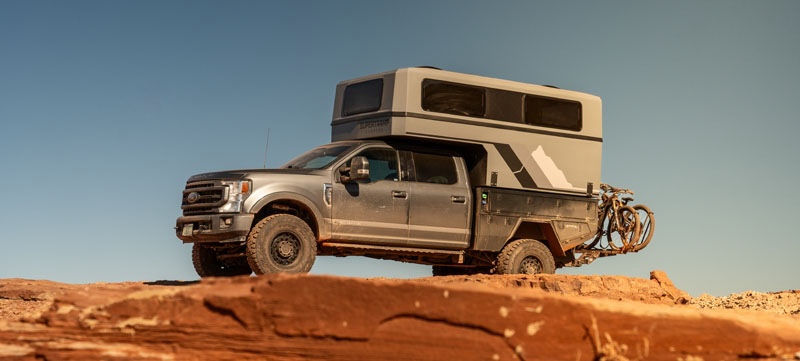
As for the camper cost, Matt explains that a 2026 Supertramp Flagship HT (featured in the video) starts at $65K, but often hits $70K with customer options. With his example truck—a Ford F350 6.7L diesel, crew cab, short bed, 4×4 at approximately $90K—the total comes to $155K to $160K. That’s a crazy value compared to the $180K entry-level van.
For an even stronger value, our example 2026 Ram 3500 6.4L HEMI (gas), crew cab, 4×4 Laramie brings that down to $135 to $140K. Still too high? Go used with the truck and save a fortune.
Keep in mind you’ll need tie-downs and turnbuckles with most truck and camper set-ups, adding another couple thousand. This hobby and what it brings to our lives is incredible, but it isn’t cheap.
As an industry and marketplace, truck campers need to take a more proactive role in tackling the van life phenomenon. Truck camper rigs flat out offer a more versatile, off-road worthy, four-season capable, and value-beating proposition. Yes, there are arguments to be made with all of those points, but let’s do better at making our strengths known.
Thank you, Matt and Supertramp, for making this point abundantly clear with your most excellent video. If only the Publisher of Truck Camper Magazine would listen. Oh wait.
For more information on Supertramp Campers, visit their website at SupertrampCampers.com. Click here for a Supertramp Camper brochure.
